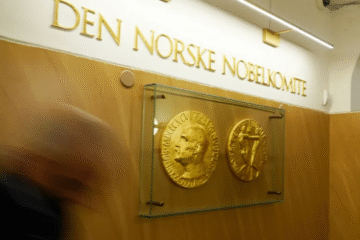What is Wrong with ANTI-CORRUPTION policies?
What you want to understand… 🤔
- Why does corruption persist?
- Is it a principal-agent problem or a collective action problem?
- Are there solutions to eradicate corruption?
- Under which circumstances can corruption be beneficial?
Corruption can be found in high-levels of government, we may then speak of kleptocracy, as well as among street-level bureaucrats who might “oil the wheels” of some individuals in exchange for favours. For the sake of this essay, we will define corruption by and large as public authorities’ partial decisions and abuses of power to serve private interests.
Despite efforts to eradicate it, corruption still persists in our societies. In this essay we will examine the reasons why we don’t manage to rid ourselves of corruption.
We will see that current anti-corruption policies address the wrong factors of corruption. We will then understand that, despite a more appropriate characterisation of corruption, means to deal with it are still to be figured out. Eventually we will explain why, in some instances, corruption can have positive effects and that trying to eliminate it would do more harm than good.
I. Mis-characterisation of the problem
The current characterisation of corruption as a principal-agent problem is wrong, and the ensuing anti-corruption policies are inefficient.
This conception of corruption means that there are flaws in the transfer of authority from a principal to an agent e.g. from citizens to the government or from politicians from bureaucrats. This issue arises in part due to the lack of monitoring over the agent’s actions. The latter takes more risks because he is not the one who bears the cost of those risks.
According to this conceptualisation, corruption equals monopoly plus discretion minus accountability (Klitgaard). Moreover, entering corruption would be the result of a cost-benefit analysis where potential gains may outweigh the costs of being caught.
It implies that to fight it, governments should reduce the discretion and the monopoly of agents, increase their monitoring, make punishments harsher and remove incentives for corruption by raising wages.
However, according to Persson et al, in practice policies of the sort don’t manage to reduce corruption significantly. Besides, the countries that have enacted the most anti-corruption measures are also the most corrupt ones. Collier warns that these measures may even worsen the problem as failed reforms give rise to a sense of cynicism among citizens. They also give more visibility to the existence of corruption which might encourage non-corrupt actors to engage in such illicit activities given the inefficiency of anti-corruption policies and the low risks of being caught.
The failure of policies based on the characterisation of corruption as a principal-agent problem has led authors like Persson et al to redefine it as a collective action problem.
II. Solutions that seem out of reach
The characterisation of corruption as a collective action problem implies solutions that are either still to be found or that are too difficult to implement.
Speaking of corruption as a collective action problem means that solutions to tackle it revolve around individuals’ coordination. Why would agents be willing to change the systems since they benefit from it? Why would some principals decide to act while others may not do so?
Indeed individuals who want to act to stop corruption fear that others free ride i.e. not participating in the fight but hoping for corruption to end so that they could enjoy it without having produced any effort in the process. Such scenario would limit the amount of support and resources available for anti-corruption movements which would ultimately lead to their failure. Therefore, people willing to act may get discouraged and would rather do nothing than consent to hopeless efforts. Besides, there is the uncertainty of long-term benefits for which short-term benefits have to be sacrificed.
Therefore characterising corruption as a collective action problem implies that to address it people’s perceptions about others’ behaviours have to be changed. However, the ways to reach this objective are still unclear.
Furthermore, according to Persson et al, a “big push” is needed to eradicate corruption. Revolutionary changes in institutions have to be carried out so that socio-economic and political elites become role models. Their mindset has to shift from “particularism-personalism-partiality” to “universalism-impersonalism-impartiality”. This objective is even more difficult to achieve than it seems because corruption is a transnational issue that would call for international cooperation and coordination.
Even though considering corruption as a collective action problem seems to be more appropriate than seeing it as a principal-agent problem, the solutions that it entails appear to be out of reach. There is no clear road map as to how to change both people’s perceptions about others’ behaviours and public authorities’ ethics.
III. Corruption can be beneficial
In certain cases, it may not be desirable to put an end to corruption since it can have positive effects on state operations’ effectiveness.
We ought to say that most of the time corruption leads to lower economic growth, wasted government funds and a poor quality of public services and infrastructure. Nevertheless, it may foster efficiency in an environment where an excess of regulations inhibits growth. Corruption would help promote development by speeding up and facilitating administrative procedures.
Holland demonstrated that corruption can be a means to support social welfare in the absence of a welfare state. For example, corruption can lead to some regulatory forbearance such that informal business and workers like street vendors can still operate which may result in positive redistributive effects when the welfare state is deficient.
In these instances, corruption appears to be beneficial. As long as the reasons for the existence of corruption in these societies are not addressed, corruption will remain necessary and thus persists for the smooth functioning of the state.
Conclusion
We can now conclude that corruption still persists first of all because current anti-corruption policies are based on a mischaracterisation of the issue. Instead of being a principal-agent problem it is rather a collective action problem. However this rectification is not enough to eradicate corruption. Doing so would require revolutionary changes in behaviour perceptions, elites’ ethics and institutions in general. Nonetheless, the practical means to bring about such a revolution are still unknown or at least unclear. Corruption also persists because in some communities it is needed to compensate for the malfunctioning of the state. Therefore as long as the root causes of the necessity for corruption are not addressed, corruption will still exist in these societies.



2 Comments
z k rollup · 21 February 2023 at 1:55 am
Reading your article helped me a lot and I agree with you. But I still have some doubts, can you clarify for me? I’ll keep an eye out for your answers.
A short History of the Iran-US relationship - geopol-trotters · 29 October 2022 at 5:54 am
[…] economic reforms to address inflation and poverty as well as democratic reforms and measures to tackle corruption and authoritarian […]